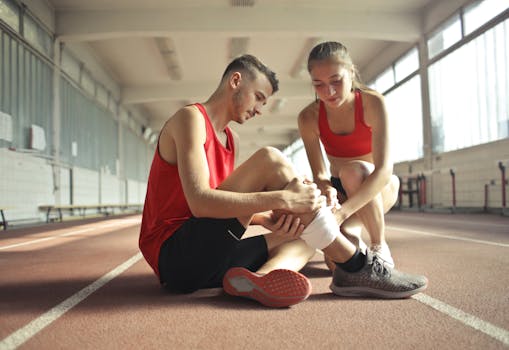Recovering from a Sports Injury: Effective Methods and Therapies
Sports injuries are an unfortunate reality for athletes at all levels, from weekend warriors to professional competitors. The road to recovery can be long and challenging, but with the right methods and therapies, athletes can return to their sport stronger than ever. This article explores effective recovery strategies, including physical therapy, alternative treatments, and psychological support.
Understanding Sports Injuries
Sports injuries can range from minor sprains to severe fractures. According to the National Athletic Trainers’ Association, approximately 3.5 million children under the age of 14 receive medical treatment for sports injuries each year in the United States. Common types of sports injuries include:
- Sprains and strains
- Fractures
- Tendinitis
- Concussions
- Shin splints
Understanding the nature of the injury is crucial for effective recovery. Each type of injury requires a tailored approach to rehabilitation.
Initial Recovery: R.I.C.E. Method
For immediate treatment of sports injuries, the R.I.C.E. method is widely recommended. R.I.C.E. stands for Rest, Ice, Compression, and Elevation. This approach helps reduce swelling and pain in the initial stages of recovery:
- Rest: Avoid putting weight on the injured area to prevent further damage.
- Ice: Apply ice packs for 15-20 minutes every hour to reduce swelling.
- Compression: Use elastic bandages to compress the injured area, which can help minimize swelling.
- Elevation: Keep the injured area elevated above heart level to reduce swelling.
Implementing the R.I.C.E. method promptly can significantly impact the recovery timeline.
Physical Therapy: A Key Component
Once the initial pain and swelling have subsided, physical therapy becomes a critical part of the recovery process. A physical therapist can design a personalized rehabilitation program that includes:
- Strengthening exercises to rebuild muscle
- Flexibility training to improve range of motion
- Balance and coordination drills to prevent future injuries
For example, a study published in the Journal of Orthopaedic & Sports Physical Therapy found that athletes who engaged in structured physical therapy after an injury had a 30% faster recovery rate compared to those who did not.
Alternative Therapies: Exploring Options
In addition to traditional physical therapy, many athletes are turning to alternative therapies to aid recovery. Some popular options include:
- Acupuncture: This ancient Chinese practice can help reduce pain and inflammation.
- Massage therapy: Therapeutic massage can improve circulation and promote healing.
- Chiropractic care: Adjustments can help restore proper alignment and function.
While scientific evidence varies for these therapies, many athletes report positive outcomes, making them worth considering as part of a comprehensive recovery plan.
The Psychological Aspect of Recovery
Recovering from a sports injury is not just a physical challenge; it can also take a toll on an athlete’s mental health. Anxiety, depression, and fear of re-injury are common psychological barriers during recovery. Strategies to address these issues include:
- Setting realistic goals to maintain motivation
- Engaging in mental imagery techniques to visualize successful performance
- Seeking support from sports psychologists or counselors
A case study involving a professional soccer player showed that incorporating mental health support into the recovery process led to a quicker return to play and improved performance post-injury.
Conclusion: A Holistic Approach to Recovery
Recovering from a sports injury requires a multifaceted approach that combines physical rehabilitation, alternative therapies, and psychological support. By understanding the nature of the injury and implementing effective recovery strategies, athletes can not only heal but also enhance their performance. Remember, patience and persistence are key; recovery is a journey that varies for each individual. With the right support and methods, athletes can emerge from their injuries stronger and more resilient than before.
